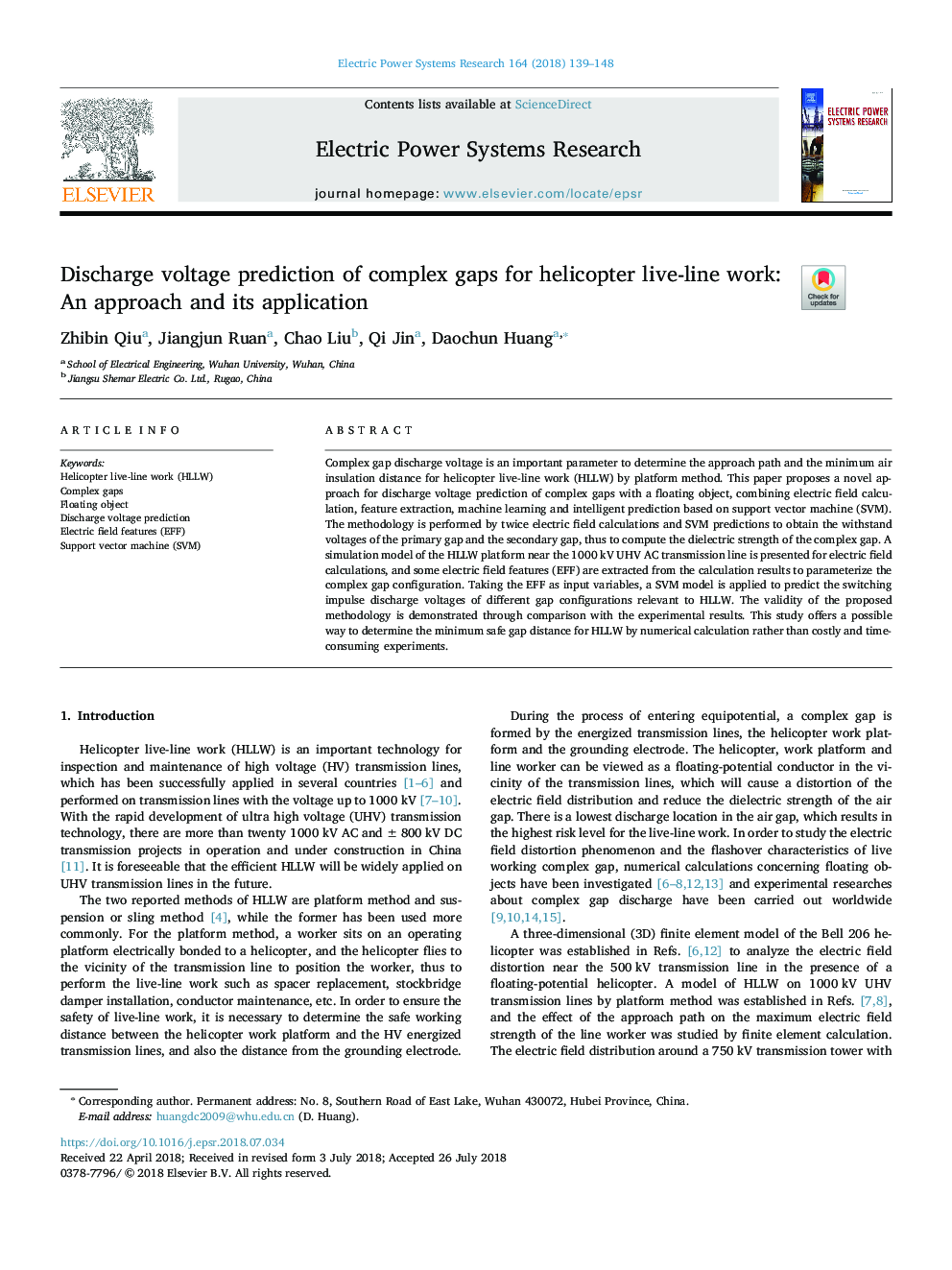| Article ID | Journal | Published Year | Pages | File Type |
|---|---|---|---|---|
| 7111811 | Electric Power Systems Research | 2018 | 10 Pages |
Abstract
Complex gap discharge voltage is an important parameter to determine the approach path and the minimum air insulation distance for helicopter live-line work (HLLW) by platform method. This paper proposes a novel approach for discharge voltage prediction of complex gaps with a floating object, combining electric field calculation, feature extraction, machine learning and intelligent prediction based on support vector machine (SVM). The methodology is performed by twice electric field calculations and SVM predictions to obtain the withstand voltages of the primary gap and the secondary gap, thus to compute the dielectric strength of the complex gap. A simulation model of the HLLW platform near the 1000Â kV UHV AC transmission line is presented for electric field calculations, and some electric field features (EFF) are extracted from the calculation results to parameterize the complex gap configuration. Taking the EFF as input variables, a SVM model is applied to predict the switching impulse discharge voltages of different gap configurations relevant to HLLW. The validity of the proposed methodology is demonstrated through comparison with the experimental results. This study offers a possible way to determine the minimum safe gap distance for HLLW by numerical calculation rather than costly and time-consuming experiments.
Keywords
Related Topics
Physical Sciences and Engineering
Energy
Energy Engineering and Power Technology
Authors
Zhibin Qiu, Jiangjun Ruan, Chao Liu, Qi Jin, Daochun Huang,
